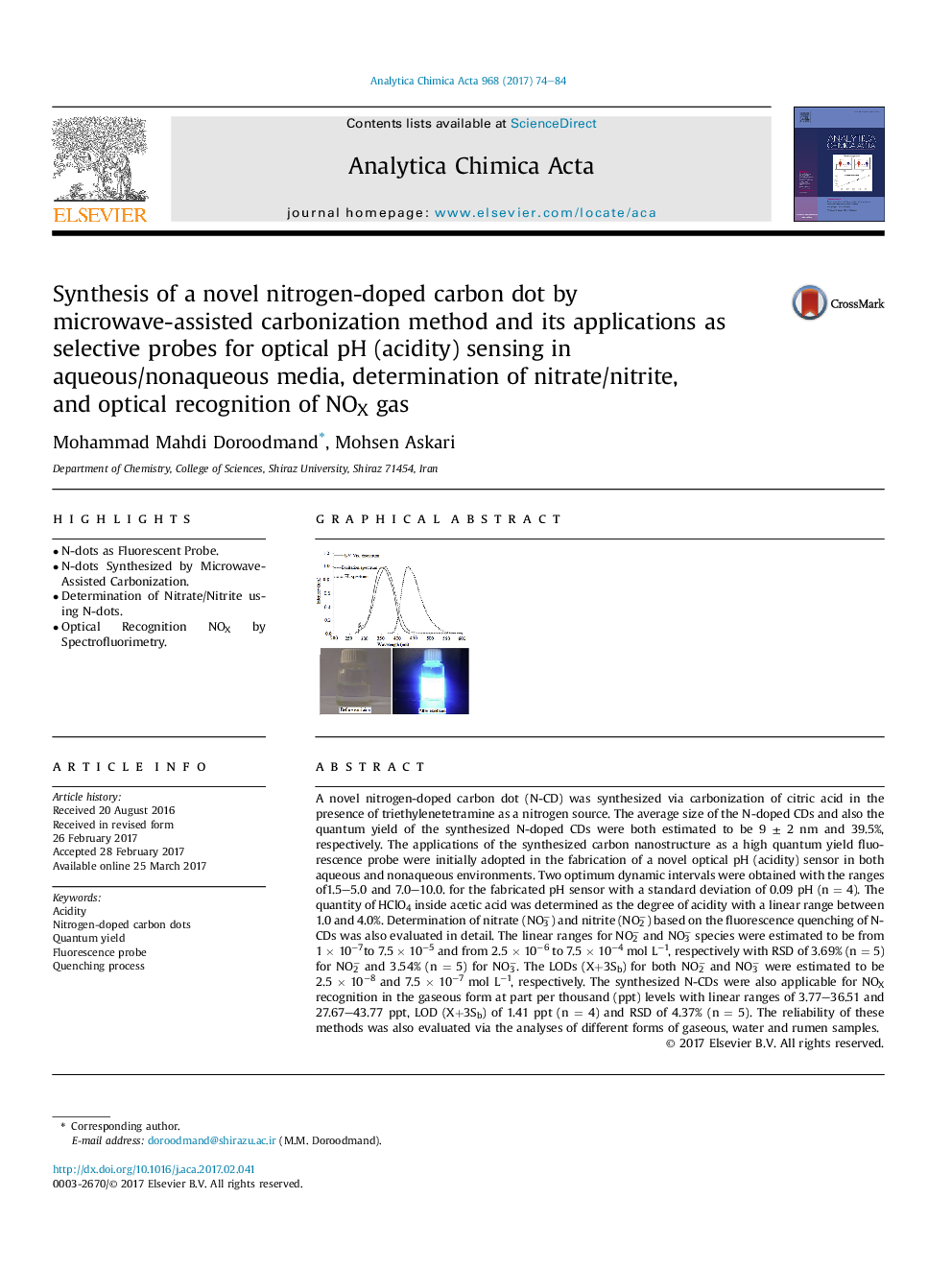| کد مقاله | کد نشریه | سال انتشار | مقاله انگلیسی | نسخه تمام متن |
|---|---|---|---|---|
| 5130891 | 1490864 | 2017 | 11 صفحه PDF | دانلود رایگان |

- N-dots as Fluorescent Probe.
- N-dots Synthesized by Microwave-Assisted Carbonization.
- Determination of Nitrate/Nitrite using N-dots.
- Optical Recognition NOX by Spectrofluorimetry.
A novel nitrogen-doped carbon dot (N-CD) was synthesized via carbonization of citric acid in the presence of triethylenetetramine as a nitrogen source. The average size of the N-doped CDs and also the quantum yield of the synthesized N-doped CDs were both estimated to be 9 ± 2 nm and 39.5%, respectively. The applications of the synthesized carbon nanostructure as a high quantum yield fluorescence probe were initially adopted in the fabrication of a novel optical pH (acidity) sensor in both aqueous and nonaqueous environments. Two optimum dynamic intervals were obtained with the ranges of1.5-5.0 and 7.0-10.0. for the fabricated pH sensor with a standard deviation of 0.09 pH (n = 4). The quantity of HClO4 inside acetic acid was determined as the degree of acidity with a linear range between 1.0 and 4.0%. Determination of nitrate (NO3â) and nitrite (NO2â) based on the fluorescence quenching of N-CDs was also evaluated in detail. The linear ranges for NO2â and NO3â species were estimated to be from 1 Ã 10â7to 7.5 Ã 10â5 and from 2.5 Ã 10â6 to 7.5 Ã 10â4 mol Lâ1, respectively with RSD of 3.69% (n = 5) for NO2â and 3.54% (n = 5) for NO3â. The LODs (X+3Sb) for both NO2â and NO3â were estimated to be 2.5 Ã 10â8 and 7.5 Ã 10â7 mol Lâ1, respectively. The synthesized N-CDs were also applicable for NOX recognition in the gaseous form at part per thousand (ppt) levels with linear ranges of 3.77-36.51 and 27.67-43.77 ppt, LOD (X+3Sb) of 1.41 ppt (n = 4) and RSD of 4.37% (n = 5). The reliability of these methods was also evaluated via the analyses of different forms of gaseous, water and rumen samples.
179
Journal: Analytica Chimica Acta - Volume 968, 22 May 2017, Pages 74-84